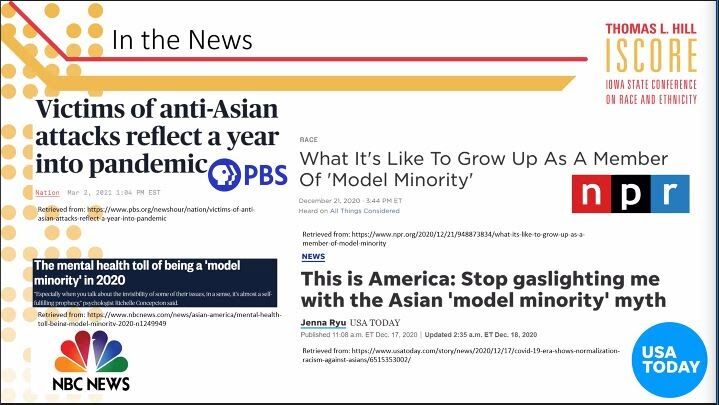Representation, experiences and the life of Asian Americans and Pacific Islanders in the US
The concept of the Asian American and Pacific Islander experience in the United States was presented during an ISCORE breakout session.
March 5, 2021
Cameron Vannoy, senior in chemistry and genetics, and Celeste Chadwick, senior in food science, presented “2020 and the Asian American Pacific Islander (AAPI) Experience in America” during their Iowa State Conference on Race and Ethnicity (ISCORE) presentation.
Their goal was to create awareness of ongoing issues within the AAPI community based on their research.
“Asian American Pacific Islander, commonly known as APPI,…include [a] person having origins in any of the original people from the far East, Southeast Asia or the Indian subcontinent,” Vannoy said.
They focused on the long-term negative effects caused before and after World War 2, the model minority myth, representation in media and, just recently, anti-Asian sentiment due to COVID-19.
Starting with some historical background, Vannoy explained how people perceived AAPI immigrants as job stealers and criminals — according to the media created back then — as they came to the U.S. during the Gold Rush of 1849. Later on, after the attack on Pearl Harbor, the U.S. became highly nationalistic and discrimination toward Asian people increased.
Many people were left with the foreign effect, a feeling of not belonging, even if they were born in the U.S. or lived there for many years.
Representation in the media did not help much either; Vannoy and Chadwick also discussed the lack of AAPI representation in the media. They discovered that underrepresentation in children’s films created negative impacts in children developing their identities. As for adults, representation in media impacts both men and women’s perception of themselves; some tend to develop underdiagnosed eating disorders or get unnecessary surgery to fit the Western beauty standards.
More recently, anti-Asian sentiment increased after the spread of COVID-19. The New York Police Department reported an increase of 1,900 percent toward Asian Americans in New York City alone. Just like New York, crimes against the Asian community have been visible around the nation, so Vannoy and Chadwick encouraged the audience to not be bystanders if they ever witness something that is not right.
They also encouraged the audience to educate themselves and advocate for representation.

















